What Exactly is Drone Warfare?
Drone warfare involves the use of unmanned aerial vehicles (UAVs), commonly known as drones, for military operations, including surveillance, reconnaissance, and targeted attacks. This framework encompasses a range of technological advancements, ethical considerations, and international security implications, transforming the nature of conflict and challenging traditional notions of warfare.
Imagine a world where conflicts are fought not by soldiers on the ground, but by machines in the sky. It’s a reality that’s rapidly unfolding, driven by advances in drone technology, the desire for remote warfare, and the chilling precision of aerial attacks.
Drone warfare, once the stuff of science fiction, is now a fixture of modern conflict. These unmanned aerial vehicles, buzzing like mechanical bees in the sky, have transformed the battlefield, erasing traditional boundaries and blurring the lines between peace and war.
Did you know?
The global drone market is projected to reach over $63 billion by 2025? [Source: Drone Market Size, Share & Trends Analysis Report by Grand View Research] This burgeoning industry reflects the growing demand for drones in various sectors, including military, commercial, and even recreational uses. But the rapid proliferation of drone technology, particularly weaponized drones, raises profound questions about the future of warfare, the ethics of remote killing, and the potential for unintended consequences.
The increasing prevalence of combat drones, while offering advantages in terms of precision targeting and reducing casualties among friendly forces, also presents significant challenges, including the risk of civilian casualties, the potential for escalation of conflict, the erosion of international norms, and the ethical implications of automated warfare. This article explores the complex landscape of drone warfare, examining the benefits, risks, and the imperative for developing safeguards and regulations to ensure responsible use of this rapidly evolving technology.
Unveiling the Drone Advantage: Precision Strikes and Promises Casualty Reduction
Advocates of drone warfare argue that it offers distinct advantages over traditional warfare, including the ability to conduct targeted strikes with greater precision, reduce civilian casualties, and minimize the risk to friendly forces.
- Precision Targeting: Drones, equipped with advanced sensors and imaging systems, can identify and track targets with remarkable accuracy, enabling strikes that minimize collateral damage. [Source: “Precision Strike Warfare and the Revolution in Military Affairs” by David A. Deptula]
- Fun Fact: Some drones can loiter over a target for hours, even days, gathering intelligence and waiting for the opportune moment to strike, ensuring minimal collateral damage and maximizing the effectiveness of the operation.
- Reducing Casualties on the Battlefield: Drones remove the need for boots on the ground, reducing the risk of casualties for soldiers in traditional combat situations. [Source: “The Use of Unmanned Aerial Vehicles in Warfare: A Legal and Ethical Analysis” by Michael N. Schmitt]
- Asymmetric Warfare Advantages: Drones can be used effectively against adversaries lacking sophisticated air defenses, providing an advantage in asymmetrical conflicts. This has led to their increasing use by state actors and non-state actors alike. [Source: “Drone Warfare: The Transformation of Global Conflict” by Peter W. Singer]
- Intelligence Gathering and Surveillance: Drones are not just weapons platforms; they are valuable tools for gathering intelligence, conducting surveillance, and providing situational awareness on the battlefield. Their ability to operate covertly and gather real-time data can be crucial in modern warfare.
- Cost-Effectiveness Compared to Traditional Warfare: While drones themselves can be expensive, advocates argue that drone warfare is more cost-effective than deploying large numbers of troops and traditional military equipment, especially for extended operations.
The Darker Side of Drone Warfare: Unintended Consequences and the Erosion of International Norms
The rise of drone warfare has also sparked intense debate and controversy, centering on the unintended consequences, the blurring of legal and ethical lines, and the long-term impacts on global security.
- Civilian Casualties and the Fog of Drone War: While precision targeting is a key advantage, the fog of war and the inherent limitations of technology can lead to unintended civilian casualties. [Source: “The Costs of Drone Warfare: The Human, Legal, and Strategic Implications” by Medea Benjamin]
- The “Playstation Mentality” and the Distance from Warfare: The remote nature of drone warfare can create a psychological detachment from the consequences of actions, raising concerns about a “Playstation mentality” among drone operators, who may feel a disconnect from the human cost of their decisions. [Source: “Wired for War: The Robotics Revolution and Conflict in the 21st Century” by P.W. Singer]
- Legal Ambiguity and the Question of Sovereignty: The use of drones across international borders raises complex legal and ethical questions about sovereignty, the laws of war, and the use of force in foreign territories. [Source: “International Law and the Use of Drones” by Mary Ellen O’Connell]
- Escalation of Conflict and the “Slippery Slope”: There are concerns that the ease of drone strikes can lower the threshold for the use of force, increasing the risk of escalating conflict. [Source: “The Drone War: Killing by Remote Control” by Medea Benjamin and Nick Turse]
- The Proliferation of Drone Technology and the Risk of Terrorism: The technology used for drone warfare is becoming increasingly accessible to non-state actors, including terrorist organizations, raising concerns about the use of drones for malicious purposes, such as attacks on civilian targets or infrastructure. [Source: “Drones and Terrorism: Assessing the Risks and Countermeasures” by James Andrew Lewis]
Unique Challenges
- Balancing Military Effectiveness with Ethical Considerations: How can we harness the precision and advantages of drone technology while mitigating the risks to civilians and upholding the principles of just war?
- Developing International Norms and Legal Frameworks: The global community needs to establish clear rules and regulations for the use of drones in warfare, addressing issues of sovereignty, legitimate targets, accountability for civilian casualties, and the prevention of proliferation.
- Transparency and Public Accountability: Greater transparency is needed in the deployment and operation of drones, ensuring accountability for their actions and fostering public trust in their use.
- The Future of Drone Technology and the Risk of Automation: As drone technology advances, concerns are rising about the potential for fully autonomous drones capable of making life-or-death decisions without human intervention. The ethical and legal implications of such developments require careful consideration and debate.
Potential Solutions
- Developing and Enforcing International Regulations: A global treaty or agreement is needed to regulate the use of combat drones, establishing clear standards for their use, defining legitimate targets, and holding nations accountable for civilian casualties.
- Promoting Transparency and Accountability: Governments and military organizations should be transparent about their drone programs, releasing data on the number of strikes, targets, and civilian casualties. Independent oversight mechanisms are essential for ensuring accountability.
- Strengthening Domestic Oversight and Judicial Review: Nations should establish clear legal frameworks for the use of drones, ensuring that their deployment adheres to domestic and international laws. Judicial review and independent oversight are crucial for preventing abuses.
- Investing in Counter-Drone Technologies: As drone technology proliferates, it’s crucial to invest in counter-drone technologies, including detection systems, jamming devices, and other methods to neutralize rogue drones or prevent them from reaching sensitive areas.
- Promoting Ethical and Legal Education for Drone Operators: Training programs for drone operators should emphasize the ethical and legal considerations of drone warfare, reinforcing the importance of proportionality, discrimination, and the avoidance of civilian casualties.
Staying Ahead of the Game: The Need for Adaptation and Innovation
The field of drone technology is evolving rapidly, creating a moving target for those seeking to mitigate its risks and harness its potential. Staying ahead of the game requires continuous adaptation, innovation, and a commitment to staying informed about the latest developments.
Here are some key considerations:
- Technological Advancements: The pace of innovation in drone technology is astonishing, with new advancements in artificial intelligence, autonomy, and swarming capabilities emerging rapidly. It’s crucial to stay informed about these developments to assess their potential impacts and develop appropriate countermeasures.
- The Hybrid Warfare Landscape: Drones are often used in conjunction with other military technologies, cyberwarfare, and information operations, creating a complex hybrid warfare environment that requires new strategies and approaches. [Source: “The Future of Warfare: A Guide to Next-Generation Conflict” by Robert H. Latiff]
- Non-State Actors and the Asymmetric Threat: Non-state actors, including terrorist organizations and insurgent groups, are increasingly acquiring and utilizing drone technology, creating new challenges for counterterrorism efforts.
- The Need for a Multi-Layered Approach: Addressing the complex challenges of drone warfare requires a multi-layered approach, involving technological advancements, legal and ethical frameworks, international cooperation, and a commitment to human rights and the principles of just war.
- The Ethical Dimension: As drone technology becomes more sophisticated and autonomous, ethical considerations surrounding the use of lethal force, accountability, and the potential for unintended consequences become even more pressing.
Key Takeaways
- Drone warfare is transforming the landscape of conflict, offering advantages in precision targeting and reducing casualties among friendly forces, but also raising profound ethical and legal questions.
- The risk of civilian casualties, even with precision strikes, remains a significant concern, underscoring the importance of robust intelligence, careful targeting, and accountability for mistakes.
- The psychological distance inherent in remote warfare can create a disconnect between drone operators and the consequences of their actions, requiring ongoing ethical training and oversight.
- The proliferation of drone technology to non-state actors, including terrorist organizations, poses a serious threat, necessitating the development of counter-drone technologies and international cooperation to prevent misuse.
- Clear international regulations are urgently needed to establish norms, define legitimate targets, and hold nations accountable for violations in the use of combat drones.
- The future of drone warfare likely involves increasing autonomy, raising even more complex ethical dilemmas and necessitating a global dialogue on the role of AI in warfare.
- We must strive to harness the potential of drone technology while mitigating its risks, ensuring that it is used responsibly, ethically, and in a manner that ultimately promotes peace and security.
What next?
The rise of drone warfare has ushered in a new era of conflict, one characterized by both precision and peril. While drones offer advantages in terms of precision targeting, reduced casualties for friendly forces, and enhanced intelligence gathering, they also pose significant challenges, including the risk of civilian casualties, the potential for escalation, and the erosion of international norms.
Finding a path forward requires careful consideration, a commitment to developing ethical and legal frameworks, and continuous adaptation to keep pace with the rapid advancements in drone technology. The stakes are high, and the decisions we make today will shape the future of warfare for generations to come.
It’s time for a global conversation about the rules of engagement in the unmanned skies, ensuring that drone technology serves humanity rather than threatens it. The challenge is formidable, but the opportunity to shape a more peaceful and secure world is worth the effort.
Let’s work together to harness the potential of drone technology while mitigating its risks, ensuring that these powerful tools are used responsibly and ethically to promote peace and security in a world where the skies are no longer a sanctuary.





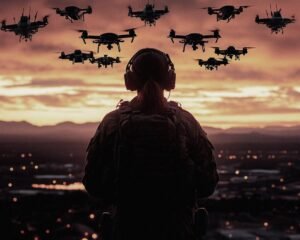




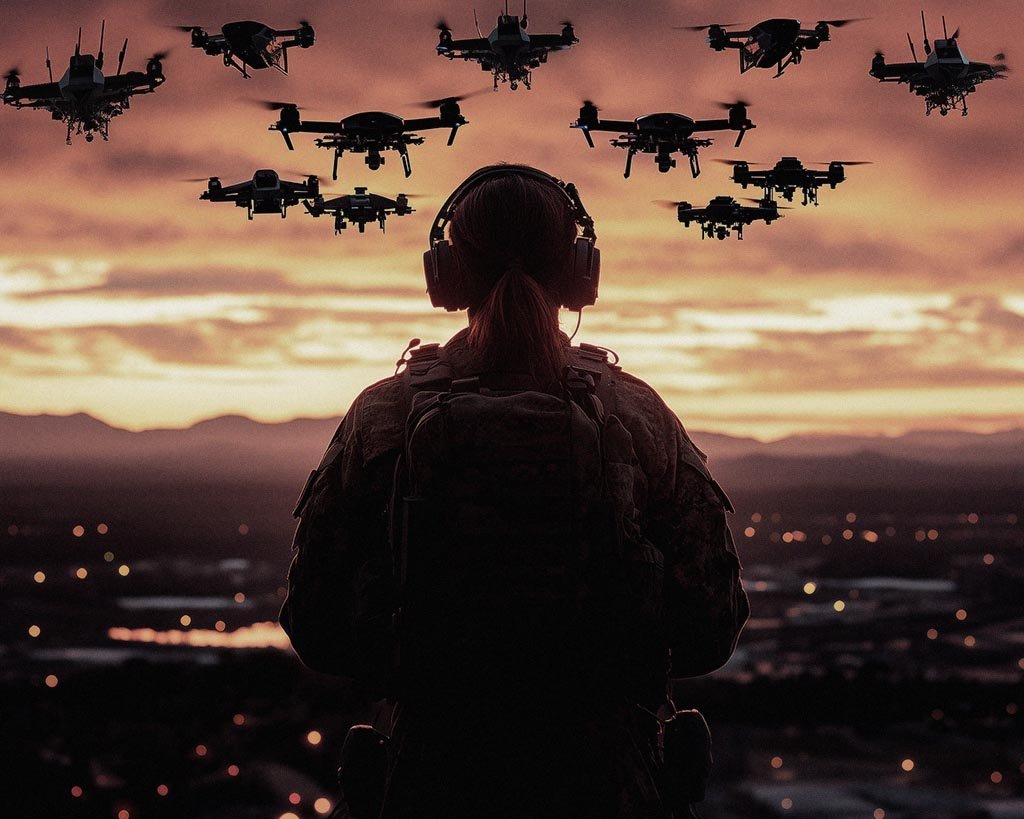
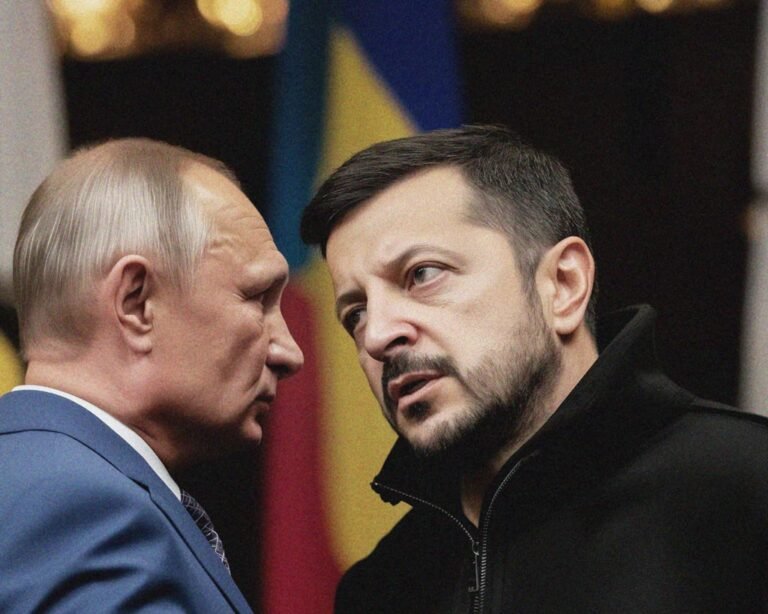



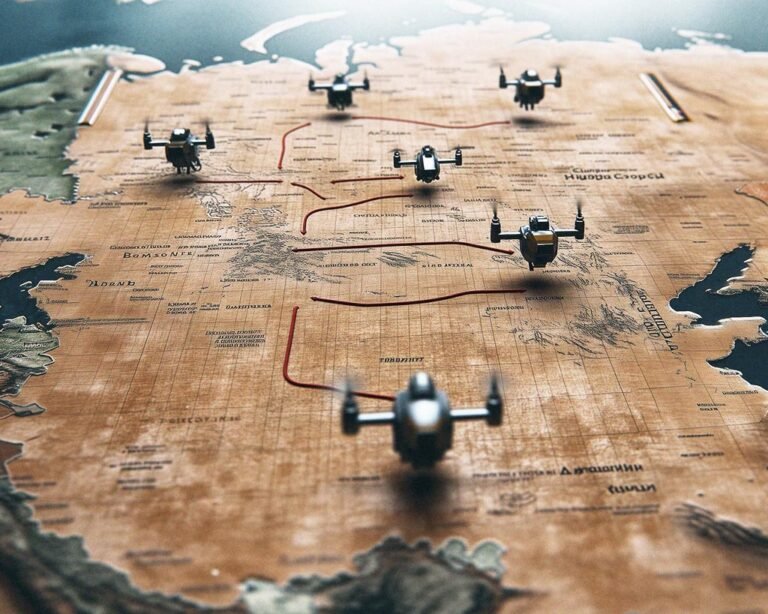
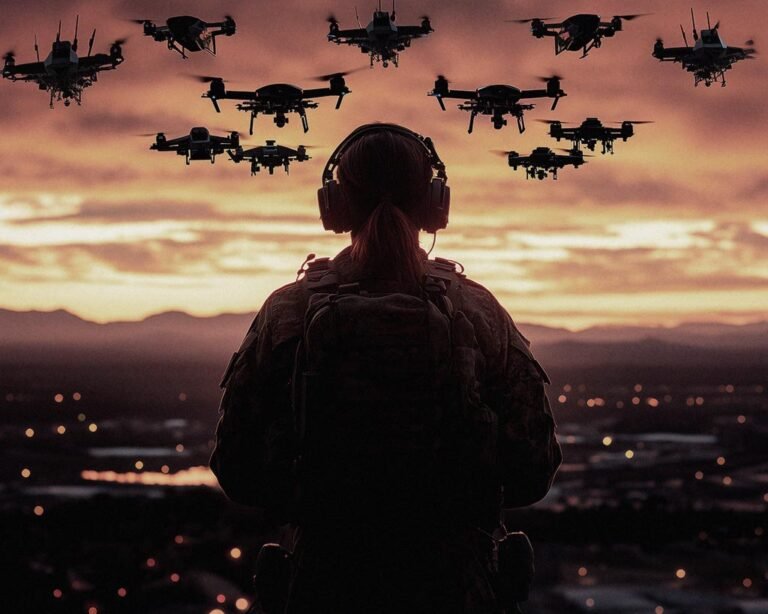


+ There are no comments
Add yours